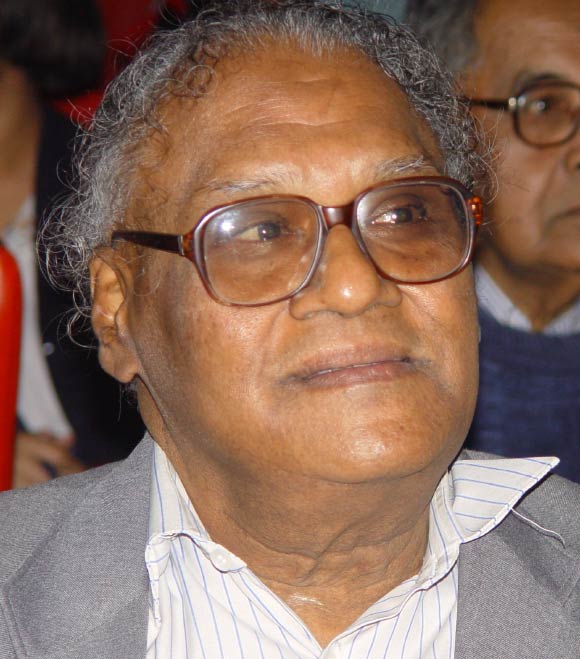Bharat Ratna, the India’s equivalent of U.S. Presidential Medal of Freedom, has historically been awarded to social and political leaders, artists and entertainers. This year, two Bharat Ratna were awarded, with one to a preeminent scientist and institution builder, Professor Chintamani Nagesa Ramachandra Rao, also known as C. N. R. Rao.

Chintamani Nagesa Ramachandra Rao. Image credit: Biswarup Ganguly / CC BY-SA 3.0.
There have been only three natural scientists amongst the total forty-three Bharat Ratna awardees. Previous scientists to receive the award are Noble Laureate C. V. Raman (1954), who is famous for his work on light scattering and A. P. J. Abdul Kalam (1997), an aerospace engineer who directed many succesful civilian and defense inititiatives of India, and was later elected the the 11th President of India by members of Parliament (President is the constituitional but not the political top official of India, which is the Prime minister).
C. N. R. Rao has been a solid-state chemist and material scientist par excelence, an instituition builder, policy maker and science educator. This recognition of C. N. R. Rao in 2014 reflects a long overdue step in the right direction by India to recognize three pivotal needs of the Indian scientific enterprise: (i) informed policy and effective administration; (ii) bold and innovative research and (iii) effective science education and communication.
C. N. R. Rao has worked extensively on transition metal oxides and was one of the earliest to synthesize two-dimensional oxide materials such as La2CuO4.
His work was pioneering in compositionally controlled metal-insulator transitions, with significant impact in the field of high temperature superconductivity and colossal magneto resistance. When most other scientists are thinking of retiring, two decades ago, he started focusing on nanomaterials making an equal dent in that field as all his previous efforts.
C. N. R. Rao has authored nearly 1,500 research papers and authored and edited 45 books. He is immensely productive at the age of 79 years, with this year itself, in just over 2 months having published 10 papers in top international journals.
Rao’s instituition building and policy credentials are unmatched in Indian science. He has been the Chairman to the Scientific Advisory Council to the India’s Prime Minister for several years.
He has served as the Director of one of the oldest and most prestigious Indian science institutions, the Indian Institution of Sciences from 1984 to 1994.
Rao is currently the Honorary President of multidisciplinary research institute, the Jawaharlal Nehru Center for Advanced Scientific Research, which he founded in 1989.
He has been instrumental in the Indian government’s establishment of several new institutions India in recent years, most notably Indian Institute of Science Education and Research across several cities as well as the National Institute of Science Education and Research.
These institutions, just as the Jawaharlal Nehru Center for Advanced Scientific Research, reflect C. N. R. Rao’s equal emphasis on research and scientific education.
C. N. Rao has been decorated with almost all scientific honors, save a Nobel, which I hope is soon to come. India’s recognition of a top scientist and establishment of several new institutions in last few years reflects a very positive trend.
Hopefully in the testing times for science when funding is lagging behind in US, some other big countries such as India and China would rise up to do world-class research and fill the void.
C. N. R. Rao’s recognition is a moment of celebration and hope for all of science.



![Chemical structure of the cyclo[48]carbon [4]catenan. Image credit: Harry Anderson.](https://cdn.sci.news/images/2025/08/image_14141-Cyclo-48-Carbon-104x75.jpg)



